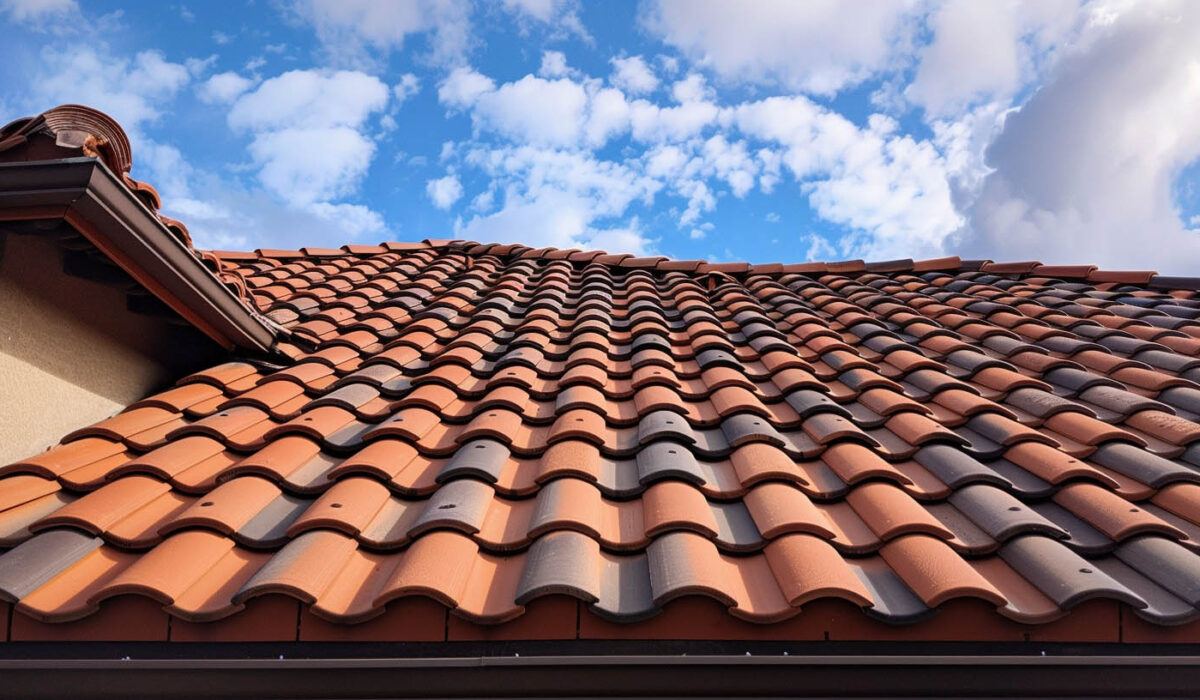Selecting the right roofing system is pivotal for ensuring durability and aesthetic appeal. Among the various options available, tile roofing emerges as a sophisticated choice, combining impressive durability with a variety of styles. Its ability to withstand harsh weather conditions while requiring relatively low maintenance makes it a popular option among homeowners. Additionally, the energy efficiency of tile roofs can significantly impact utility bills, contributing to long-term savings despite the initial investment. Understanding these factors can help homeowners make informed decisions about their roofing project.
Understanding Tile Roofing: Types and Materials
Tile roofing presents a multitude of options, with clay and concrete as the most prevalent choices. Clay tiles, renowned for their impressive durability and aesthetic appeal, can withstand harsh weather conditions while minimizing water infiltration concerns. On the other hand, concrete tiles offer an affordable yet versatile solution, boasting a variety of styles that cater to diverse architectural preferences. Both materials not only enhance the curb appeal of properties but also contribute to energy efficiency, helping to maintain comfortable indoor temperatures and reduce air conditioning costs long-term.
Contact UsClay Tile Roofs: Features and Typical Costs
Renowned for their impressive durability, clay tile roofs are an attractive option for homeowners seeking both aesthetic value and resilience. These roofing systems perform exceptionally well in harsh weather conditions, making them a worthwhile investment for long-term property protection. Typical costs for clay tiles can vary significantly based on the quality materials used and the roof size, generally ranging from $10 to $18 per square foot. Regular maintenance and inspections are essential to prevent water infiltration and structural damage, ensuring the longevity of your roofing project.

Concrete Tile Roofs: Features and Typical Costs
Concrete tiles stand out for their impressive durability and ability to withstand harsh weather conditions. Typically heavier than other roofing materials, they require a robust support structure but offer an attractive option with a variety of styles and colors. The initial investment for concrete tile roofs usually ranges from $3 to $7 per square foot, influenced by installation costs and labor expenses. Despite the higher upfront costs, their low maintenance requirements and energy efficiency lead to significant long-term savings, enhancing your property’s overall value.
Initial Investment in Tile Roofing
Installing tile roofing requires careful planning due to the significant upfront investment. In San Diego, CA costs include not just materials but also labor and permits. Hiring a contractor like Tile Roofing San Diego ensures the job is done correctly, minimizing unexpected mistakes.
While initial expenses for tile roofs can be high, their longevity makes them worthwhile. They are durable, reducing repair needs, and can improve energy efficiency, resulting in long-term savings.
Material Costs in San Diego, CA
Material costs for tile roofing in San Diego, CA, can vary significantly based on the chosen materials. Clay tiles tend to exhibit higher upfront investment due to their impressive durability and aesthetic appeal, often ranging between $8 to $12 per square foot. In contrast, concrete tiles offer an attractive option at a lower cost, typically between $4 to $8 per square foot. Considering the region’s harsh weather conditions, investing in quality materials ensures long-term energy savings and reduces the likelihood of structural damage, making it a worthwhile investment.

Labor and Installation Expenses
Labor and installation expenses play a crucial role in determining the overall cost of tile roofing. The complexity of the roof design, including features such as slopes or intricate architectural styles, can lead to increased labor costs. Skilled roofing contractors typically charge higher rates for their expertise, which ensures proper handling of quality materials and installation techniques. While upfront investment may appear significant, proper maintenance and installation can lead to durable performance, ultimately providing peace of mind and long-term energy savings for homeowners.
Permit and Inspection Fees
Securing a tile roofing project often involves navigating various permit and inspection fees that can impact the overall cost. These fees are typically dictated by local building codes and regulations, varying significantly by region. Proper inspections throughout the installation process are crucial to ensure compliance and safeguard against potential issues like water damage or structural compromise. Though these additional expenses may seem burdensome initially, investing in necessary permits and inspections contributes to long-term durability and peace of mind, elevating the value of your property in the process.
Longevity and Lifespan of Tile Roofs
Tile roofs are known to last a long time. With proper maintenance, clay and concrete tiles can last from 50 to 100 years. This makes them a good and worthwhile investment for people who want to save money as the years go by when picking roofing systems.
Because tile roofs last so long, you do not have to replace your roof as often. This will save you both time and money. Also, the mild weather in San Diego helps tile roofs last even longer. Your home will stay safe and it will look good for many years when you choose tile roofs.
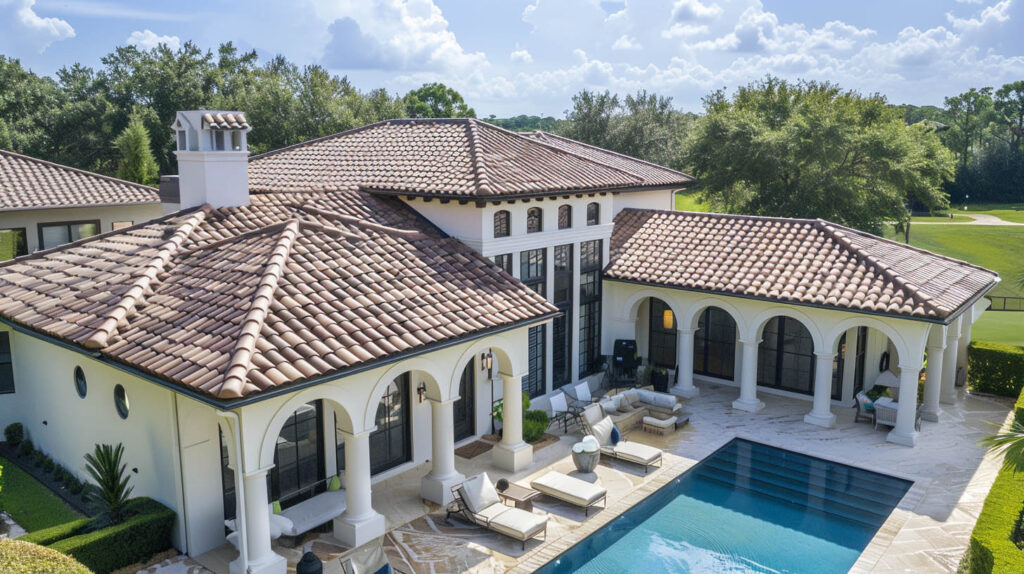
Expected Lifespan of Clay and Concrete Tiles
Clay and concrete tiles are renowned for their impressive durability, often lasting between 50 to 100 years with proper maintenance. This longevity significantly offsets the initial investment, as the need for roof replacement is minimized over time. Regular inspections and upkeep can prevent issues like water infiltration, which may lead to structural damage. The remarkable lifespan of these materials not only enhances the overall property value but also contributes to lower energy bills, making tile roofing a worthwhile investment for homeowners.
Factors Affecting Roof Longevity in San Diego Climate
In the San Diego climate, various factors significantly influence roof longevity. One crucial aspect is the area’s exposure to harsh weather conditions, including UV radiation and occasional heavy rains. Selecting quality materials, such as clay or concrete tiles, adds impressive durability against these environmental challenges. Regular maintenance, encompassing inspections and repairs, is essential to prevent water damage and structural issues. Additionally, the complexity of the roof design may dictate the frequency of upkeep required, impacting both its lifespan and overall cost-effectiveness.
Maintenance Requirements and Costs
Proper maintenance of tile roofs involves regular inspections to prevent structural damage and ensure longevity. While they are known for impressive durability and low maintenance requirements, occasional repairs may be necessary due to harsh weather conditions or water infiltration. Budgeting for these potential expenses is vital to maintain curb appeal and property value. Generally, tile roofing systems provide peace of mind, as they require less frequent interventions than alternatives, ultimately contributing to energy savings and reduced utility bills over the long run.
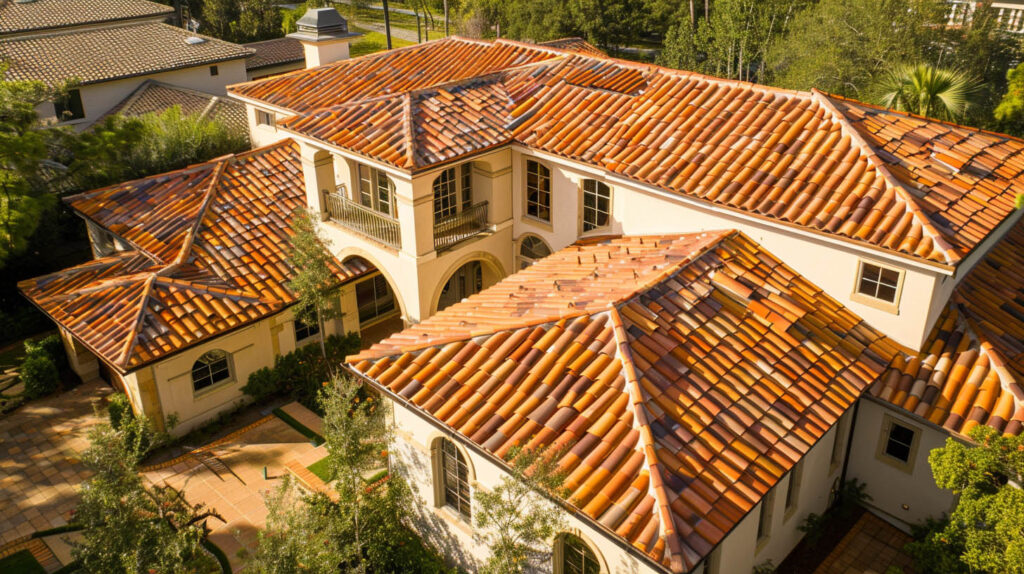
Routine Inspections and Minor Repairs
Regular inspections play a critical role in maintaining the integrity of tile roofing systems. Homeowners should schedule these evaluations to identify potential issues such as water infiltration or structural damage, which could lead to more significant repairs and additional expenses if left unchecked. Minor repairs, including replacing a few damaged tiles, can enhance the impressive durability and aesthetic appeal of the roof. Proper maintenance not only prolongs its lifespan but also ensures continued energy efficiency, ultimately protecting the initial investment while adding significant value to the property.
Addressing Broken Tiles and Leak Prevention
Neglecting broken tiles can lead to significant water infiltration, resulting in severe structural damage over time. Regular inspections are essential, as they facilitate the early detection of compromised tiles. Addressing these issues promptly not only preserves the aesthetic value of your roof but also enhances its overall durability. Investing in quality roofing services can yield worthwhile results in terms of long-term savings. Proper maintenance minimizes unexpected additional expenses and maximizes energy efficiency, ensuring that your tile roofing system remains an attractive option for potential buyers in the future.
Energy Efficiency and Environmental Impact
Tile roofing stands out as an attractive option for those seeking enhanced energy efficiency. Its impressive durability allows it to withstand harsh weather conditions, significantly reducing the risk of water damage and structural problems. With proper maintenance, tile roofs contribute to more stable indoor temperatures, thus lowering cooling costs and energy bills. Beyond energy efficiency, they also have a smaller carbon footprint compared to traditional materials. Homeowners can enjoy peace of mind knowing that their investment supports sustainability while enhancing property value and curb appeal.
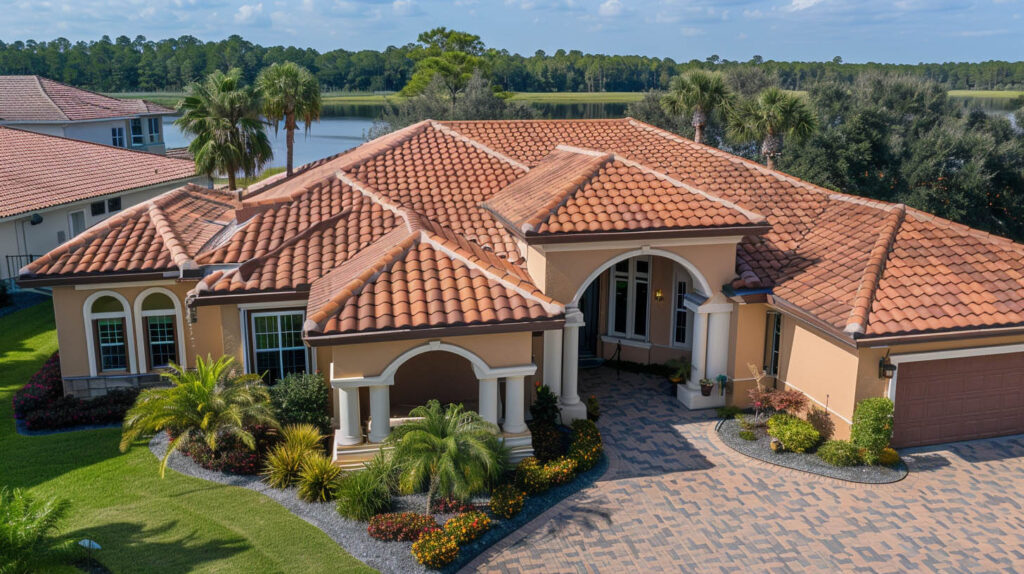
Insulation Benefits and Energy Savings
Proper insulation is a key factor in maximizing the energy efficiency of tile roofing systems. Clay and concrete tiles create a barrier that helps maintain comfortable indoor temperatures, reducing reliance on air conditioning, especially during harsh weather conditions. As a result, homeowners often see a significant decrease in utility bills over time. While the initial investment in quality materials may seem high, the long-term energy savings and the reduction in cooling costs make tile roofs a worthwhile investment, enhancing not just comfort but also property value.
Sustainability and Recyclability of Tile Roofing
Tile roofing stands out for its impressive durability and minimal environmental impact. Many tile options, such as clay and concrete, can be sourced from sustainable materials, making them an attractive option for eco-conscious homeowners. Furthermore, these roofs are highly recyclable, reducing their carbon footprint and contributing to a circular economy. After their lifespan, reusable roofing tiles can be repurposed, minimizing waste and promoting sustainability. This long-run viability ensures that tile roofs not only enhance aesthetic appeal but also align with environmentally responsible practices.
Enhanced Value and Curb Appeal for Your Property
Choosing tile roofing can make a big difference in your property’s curb appeal and market value. Tile roofs come in a variety of styles and colors. This helps boost the aesthetic appeal of any home. That is why tile roofing has become a popular choice for many potential buyers. When people think about selling their homes later, they see that tile roofs often bring a higher resale value than asphalt shingles or metal roofs. These roofs are known for their impressive durability and low maintenance requirements. This gives you peace of mind and helps your home hold its value over the years.
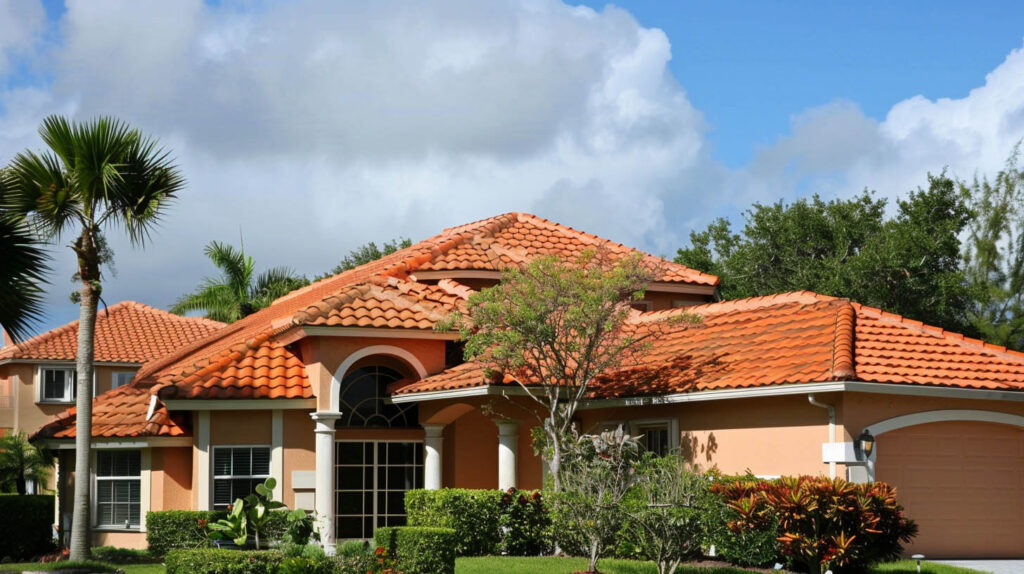
Impact on Home Resale Value
Tile roofs significantly enhance a home’s market value, making them an attractive option for potential buyers. The impressive durability of these roofing systems not only assures longevity but also minimizes long-term maintenance costs. With quality materials like clay or concrete tiles, homes equipped with tile roofs often achieve higher resale prices compared to those with asphalt shingles. This increase in property value reflects the aesthetic appeal and energy efficiency offered by tile roofing, ultimately making it a worthwhile investment for homeowners seeking to maximize their long-run returns.
Aesthetic Versatility and Architectural Styles
A wide array of architectural styles can benefit greatly from the installation of tile roofs, providing an attractive option for homeowners seeking both charm and durability. Whether opting for clay tiles that complement Mediterranean designs or concrete tiles that enhance modern aesthetics, the versatility of tile roofing meets diverse tastes. This adaptability not only elevates a home’s visual allure but also boosts its market value, appealing to potential buyers. With various colors and textures available, a tile roof can seamlessly integrate with existing designs, ensuring lasting curb appeal.
Call Us 619-350-1086Trust the Experts
A tile roof represents a substantial upfront investment, yet many homeowners find that the long-term savings in energy efficiency and maintenance costs make it a worthwhile choice. The impressive durability of tile roofing systems, combined with their ability to withstand harsh weather conditions, contributes to their increased property value over time. With regular maintenance, these roofs can last for decades, providing peace of mind and enhancing the aesthetic appeal of your home. As an Owens Corning Preferred Contractor and a GAF Master Elite Contractor, we ensure that our roofing projects meet the highest industry standards, further enhancing the value of your investment. Ultimately, the benefits of selecting quality materials for your roofing project far outweigh the initial costs.
Frequently Asked Questions
What maintenance is required for tile roofs?
Tile roofs require minimal maintenance, including regular inspections for damage, cleaning debris, and checking for loose tiles. It is advisable to maintain gutters and downspouts to prevent water accumulation. Proper care prolongs the roof’s lifespan and preserves its aesthetic appeal.
How much more expensive is a tile roof?
Tile roofs typically cost 20-30% more than traditional asphalt shingles. However, considering their durability and longevity, this initial expense can be offset by lower maintenance and energy costs over time, making them a wise long-term investment for homeowners.
Read our blog: Top 5 Signs Your Tile Roof Needs Professional Attention – Before It’s Too Late

